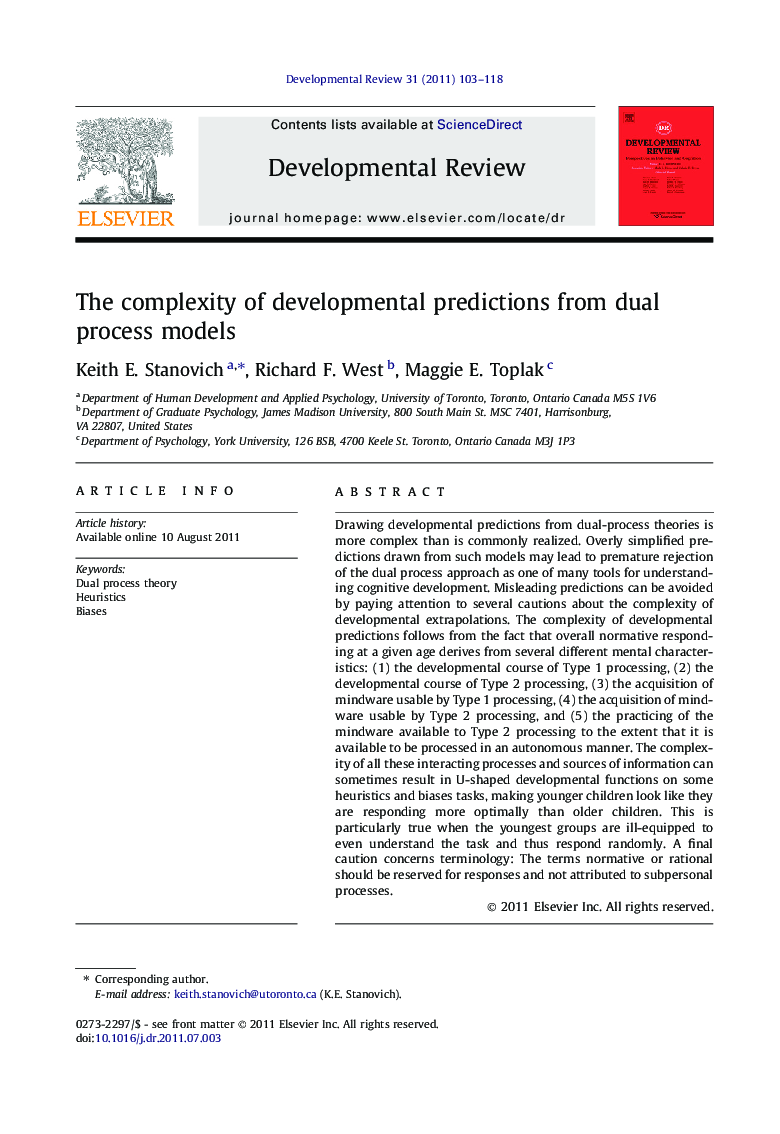| Article ID | Journal | Published Year | Pages | File Type |
|---|---|---|---|---|
| 353566 | Developmental Review | 2011 | 16 Pages |
Drawing developmental predictions from dual-process theories is more complex than is commonly realized. Overly simplified predictions drawn from such models may lead to premature rejection of the dual process approach as one of many tools for understanding cognitive development. Misleading predictions can be avoided by paying attention to several cautions about the complexity of developmental extrapolations. The complexity of developmental predictions follows from the fact that overall normative responding at a given age derives from several different mental characteristics: (1) the developmental course of Type 1 processing, (2) the developmental course of Type 2 processing, (3) the acquisition of mindware usable by Type 1 processing, (4) the acquisition of mindware usable by Type 2 processing, and (5) the practicing of the mindware available to Type 2 processing to the extent that it is available to be processed in an autonomous manner. The complexity of all these interacting processes and sources of information can sometimes result in U-shaped developmental functions on some heuristics and biases tasks, making younger children look like they are responding more optimally than older children. This is particularly true when the youngest groups are ill-equipped to even understand the task and thus respond randomly. A final caution concerns terminology: The terms normative or rational should be reserved for responses and not attributed to subpersonal processes.
► We argue that drawing developmental predictions from dual-process theories is more complex than is commonly realized. ► Overly simplified predictions may lead to premature rejection of the dual process approach. ► Normative responding at a given age derives from several different mental characteristics.
